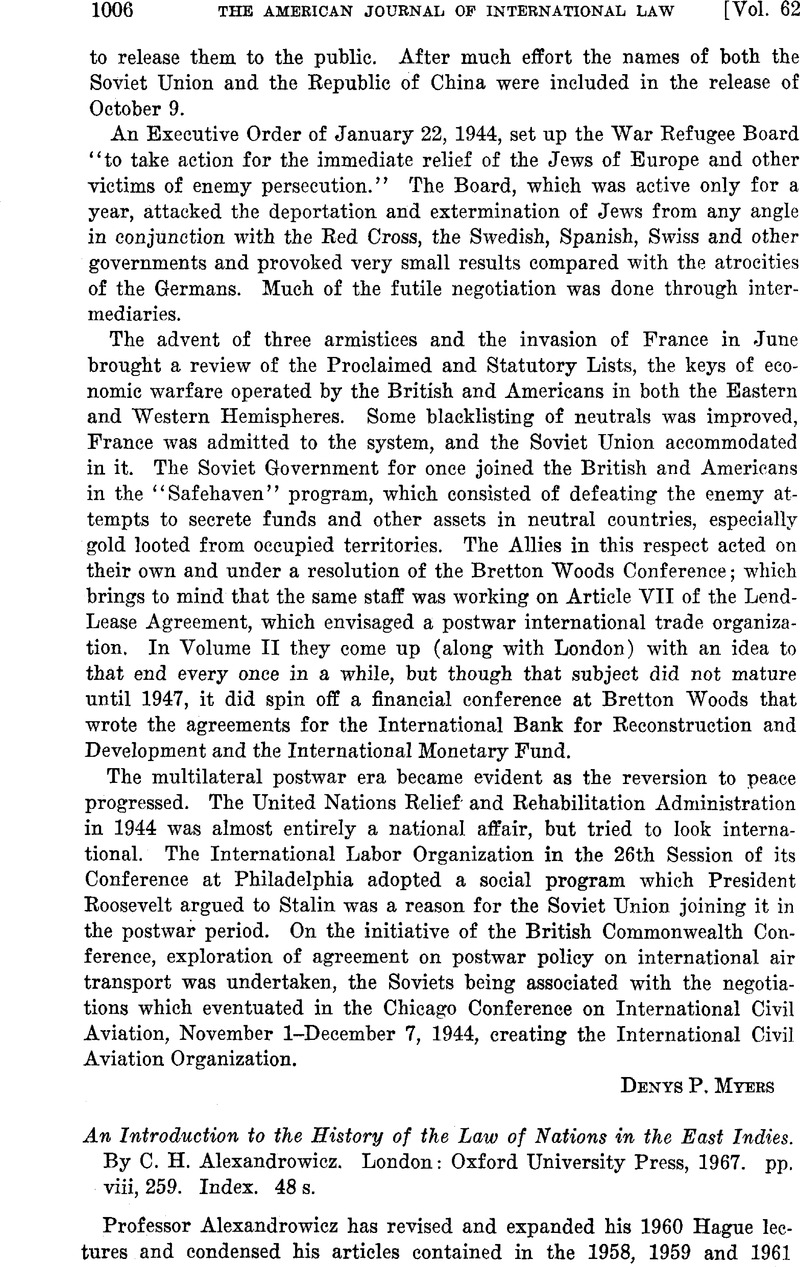No CrossRef data available.
Published online by Cambridge University Press: 28 March 2017

1 See 1 International Law, Department of the Army Pamphlet 27-161-1, 120, 121 et seq. (Washington, 1964).
2 Among many other annoying slips, “formal intercourse” between Europeans and the Empires of China and Japan existed in the 16th and 17th centuries much as it did with other Empires discussed in the book, despite Professor Alexandrowicz's unfortunate statement on p. 1; Daman and Damao, both mentioned on p. 4, are undoubtedly meant to be the same; “Atchen” appears in the index and on p. 19, “Achen” every place else; the umlaut is forgotten in Vőlkerrecht on pp. 13 and 161, note 2; “Susuhanan” (pp. 32, 33, note 1, 94, 201 and 206, note 1) is used for “Susuhunan“; “Minangkaban” is used on p. 25 for “Minangkabau“; Carlowitz and Carlovitz seem to be used interchangeably throughout; Asaf Khan and Asaph Khan appear on pp. 196 and 197, apparently referring to the same person; the name Coedes is misspelled on p. 17, note 1. A citation to Vol. 4 of this JOUKNAL on p. 23, note 3, should be to Vol. 48. A citation on p. 58, note 2, to Vol. 120 of the Grotius Society Transactions would surprise the editors of that excellent and well-known series. The correct citation is to Vol. 20. Afonso T> ‘Albuquerque was only Governor General of the Portuguese in the East, never Viceroy as asserted on p. 29; the distinction has significance to Portuguese policy in South Asia in the early 16th century, since D ‘Albuquerque and the Viceroy (Francisco D'Almeida) disagreed in policy matters and seem to have disliked each other personally. PageNO:187 1 New York Times, April 8, 1968, p. 19, col. 1.